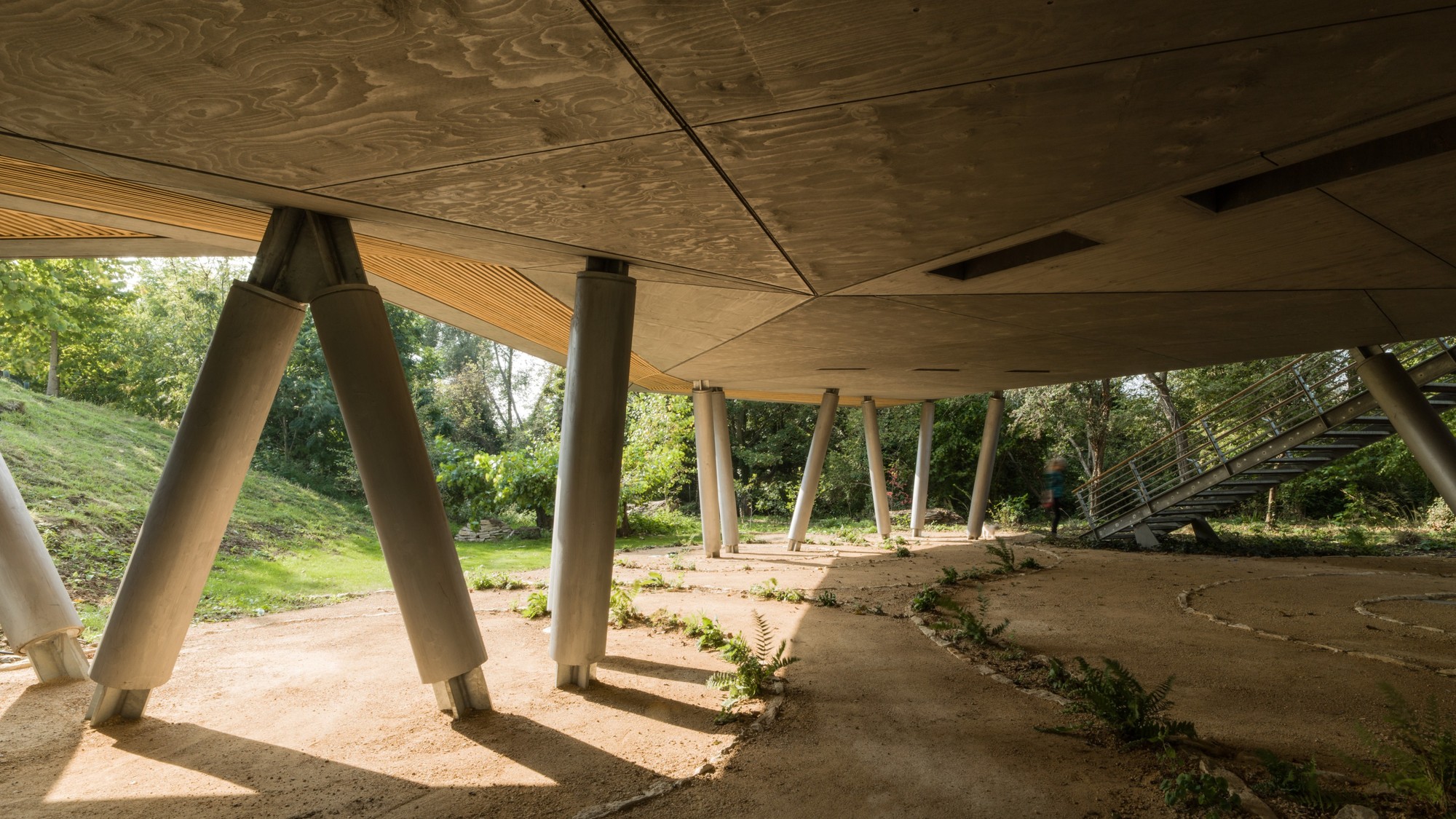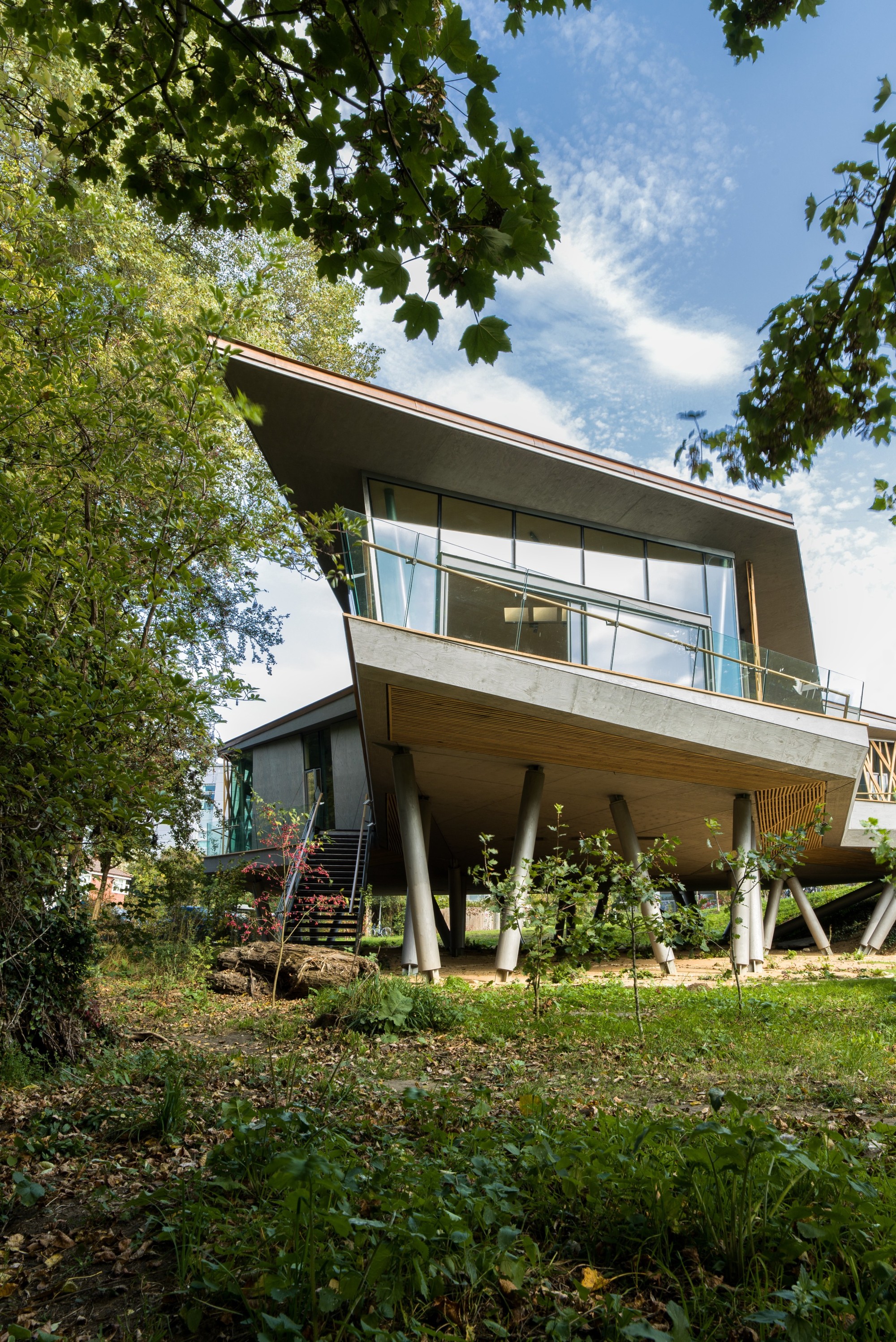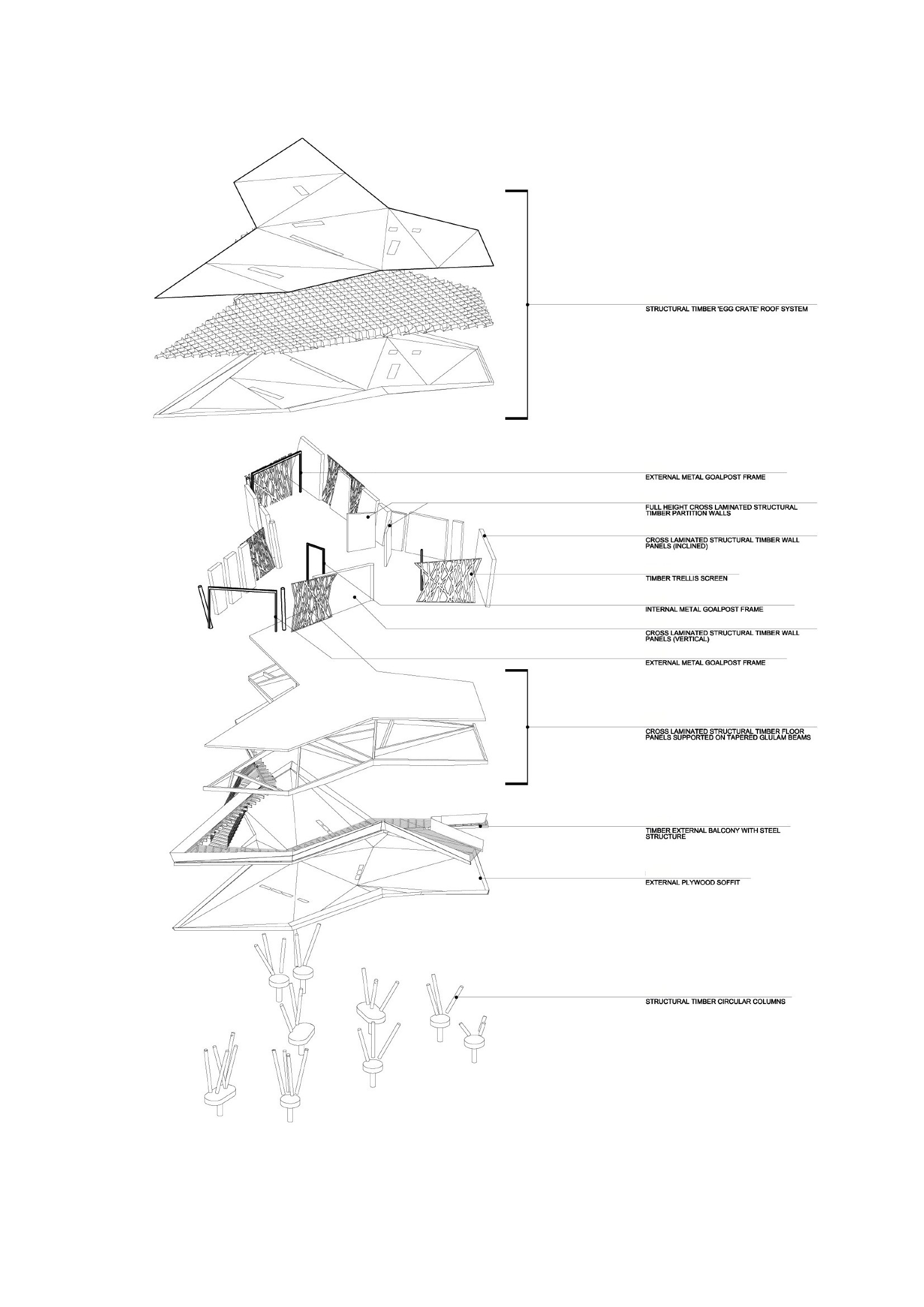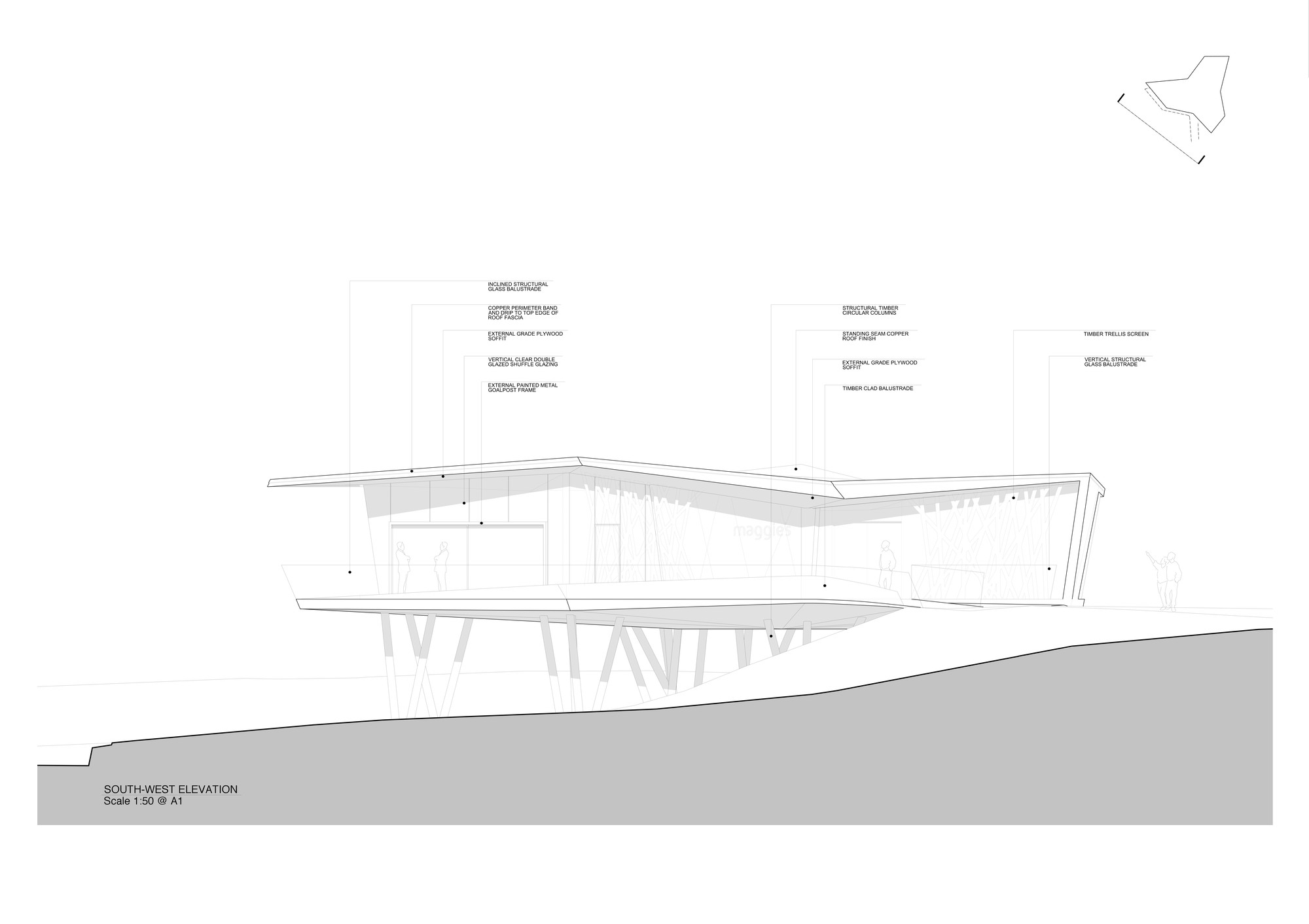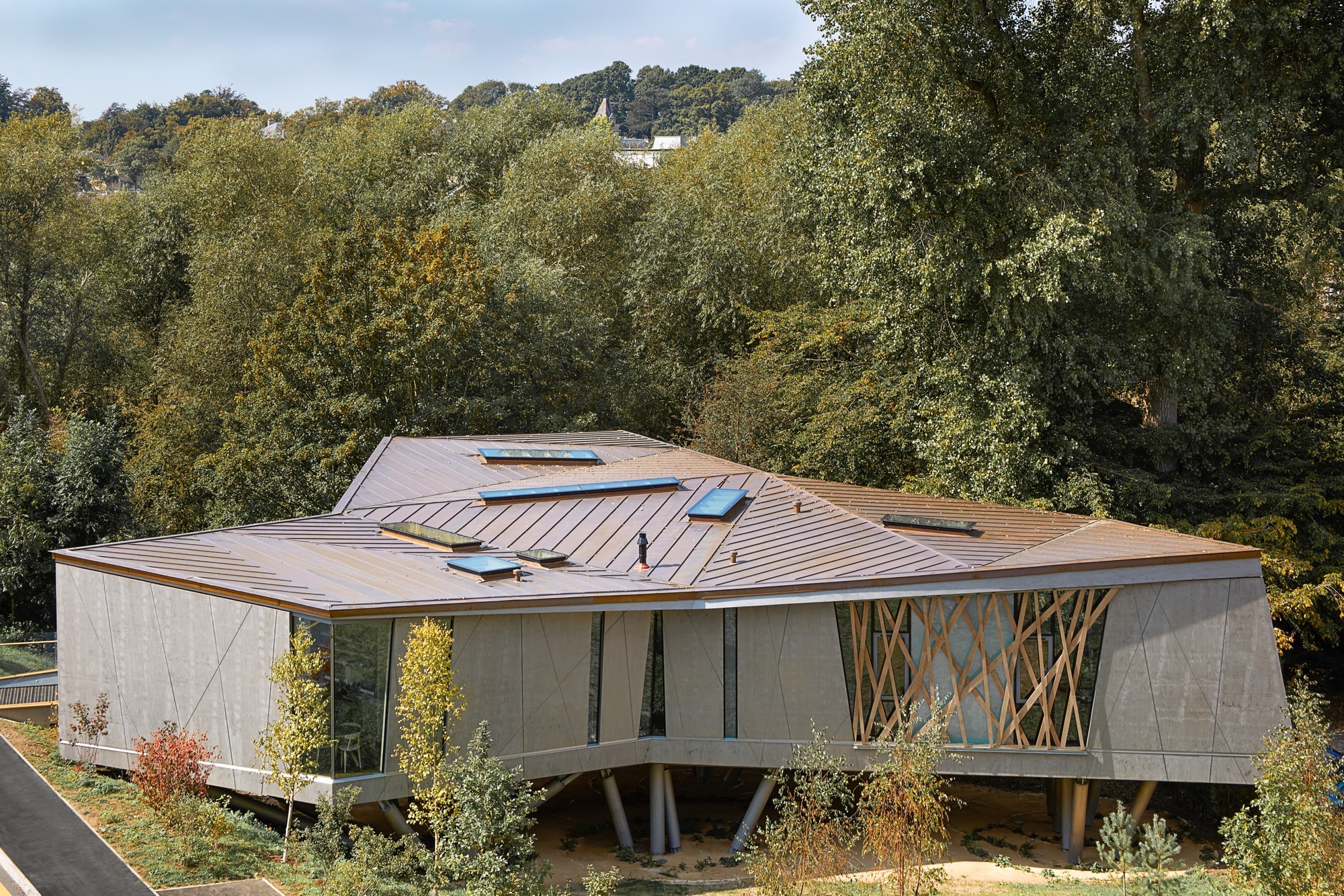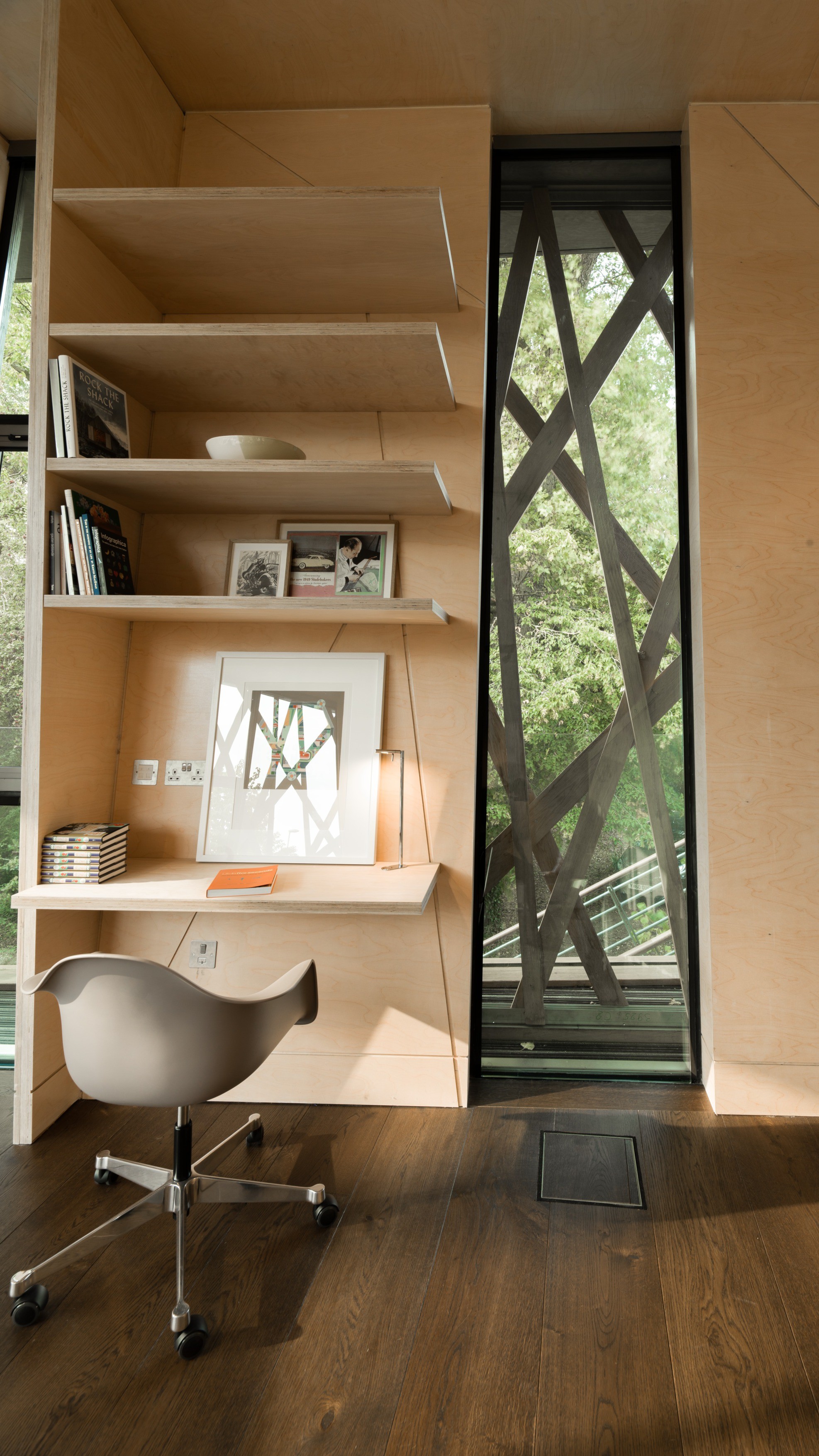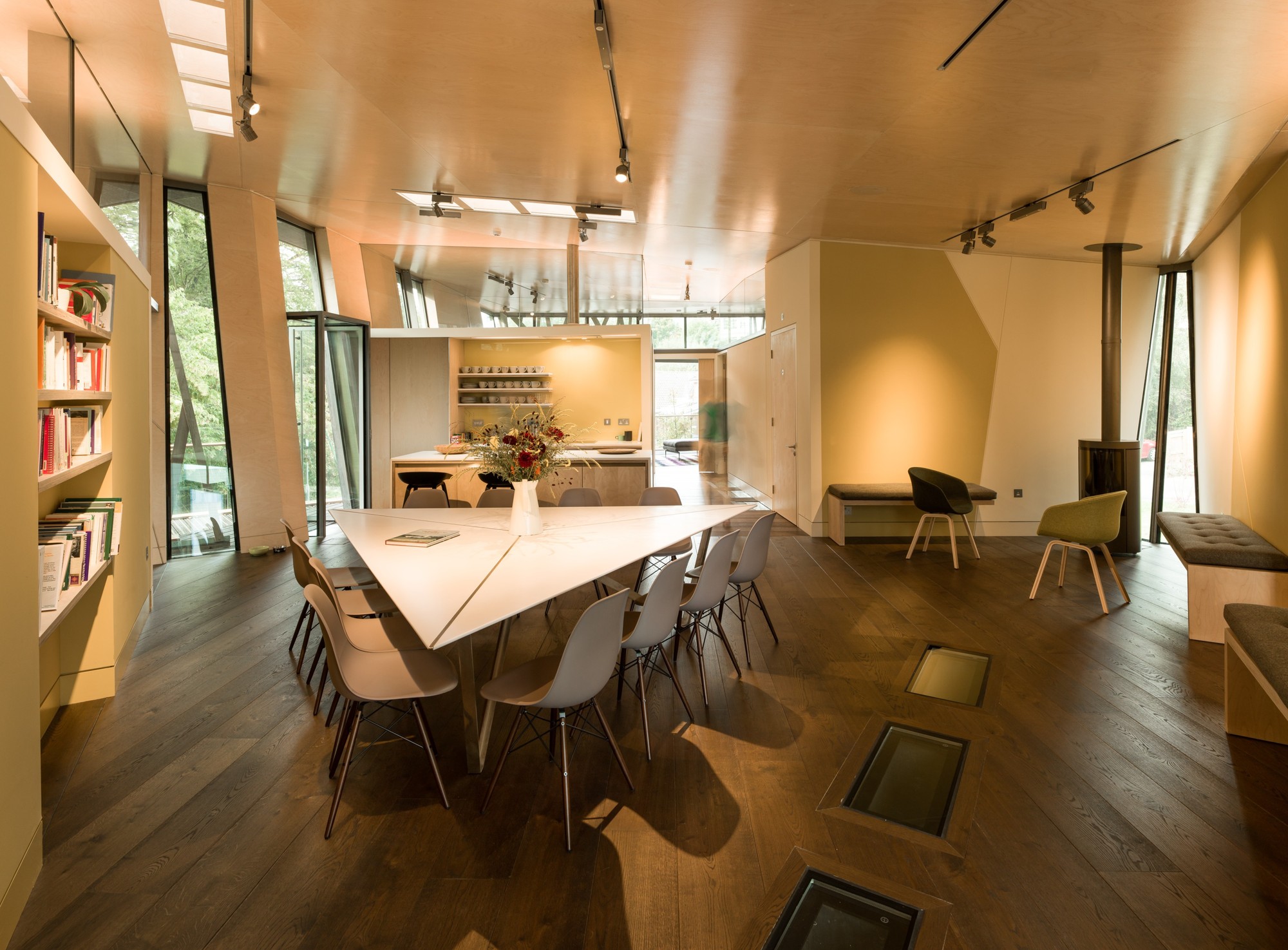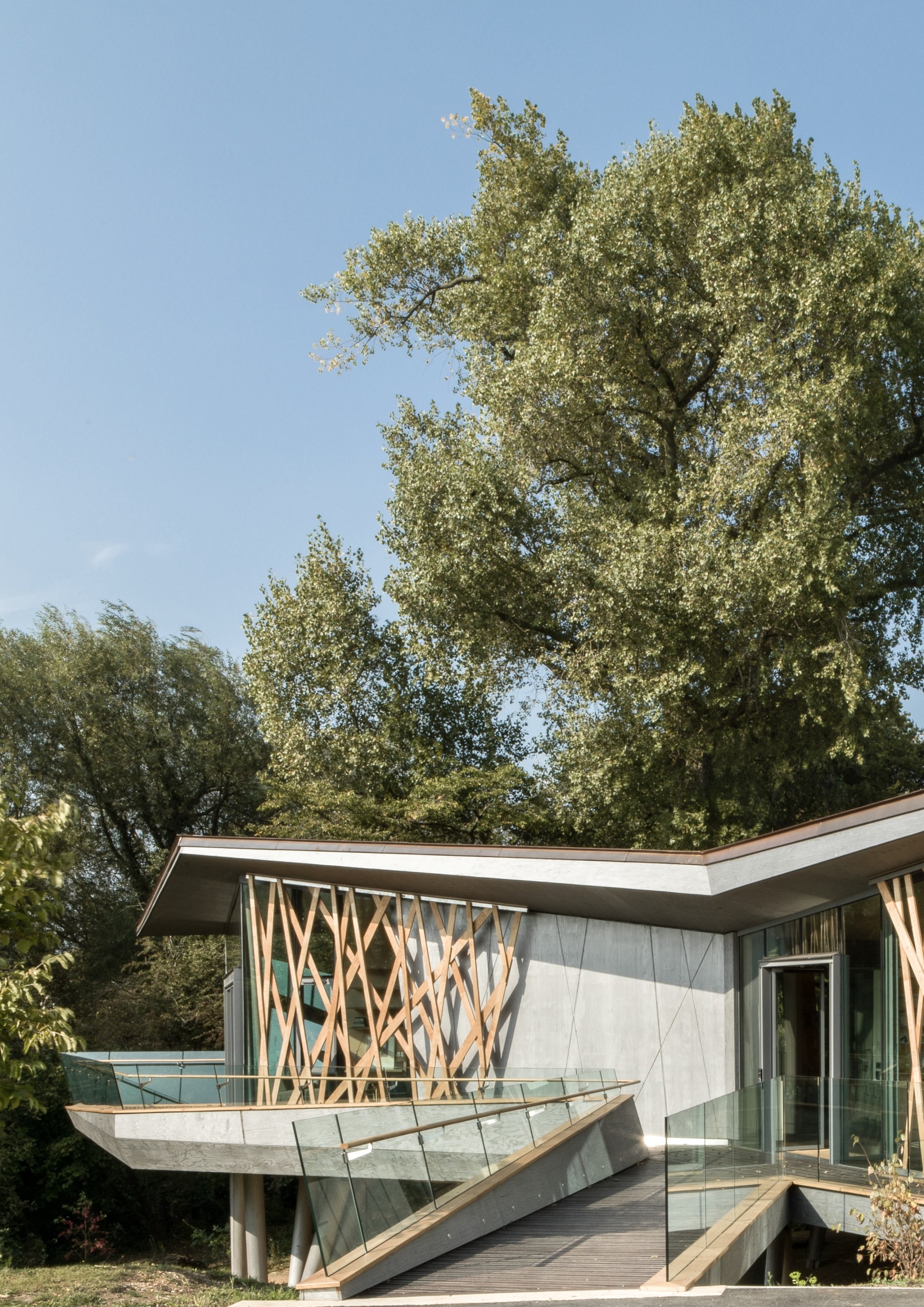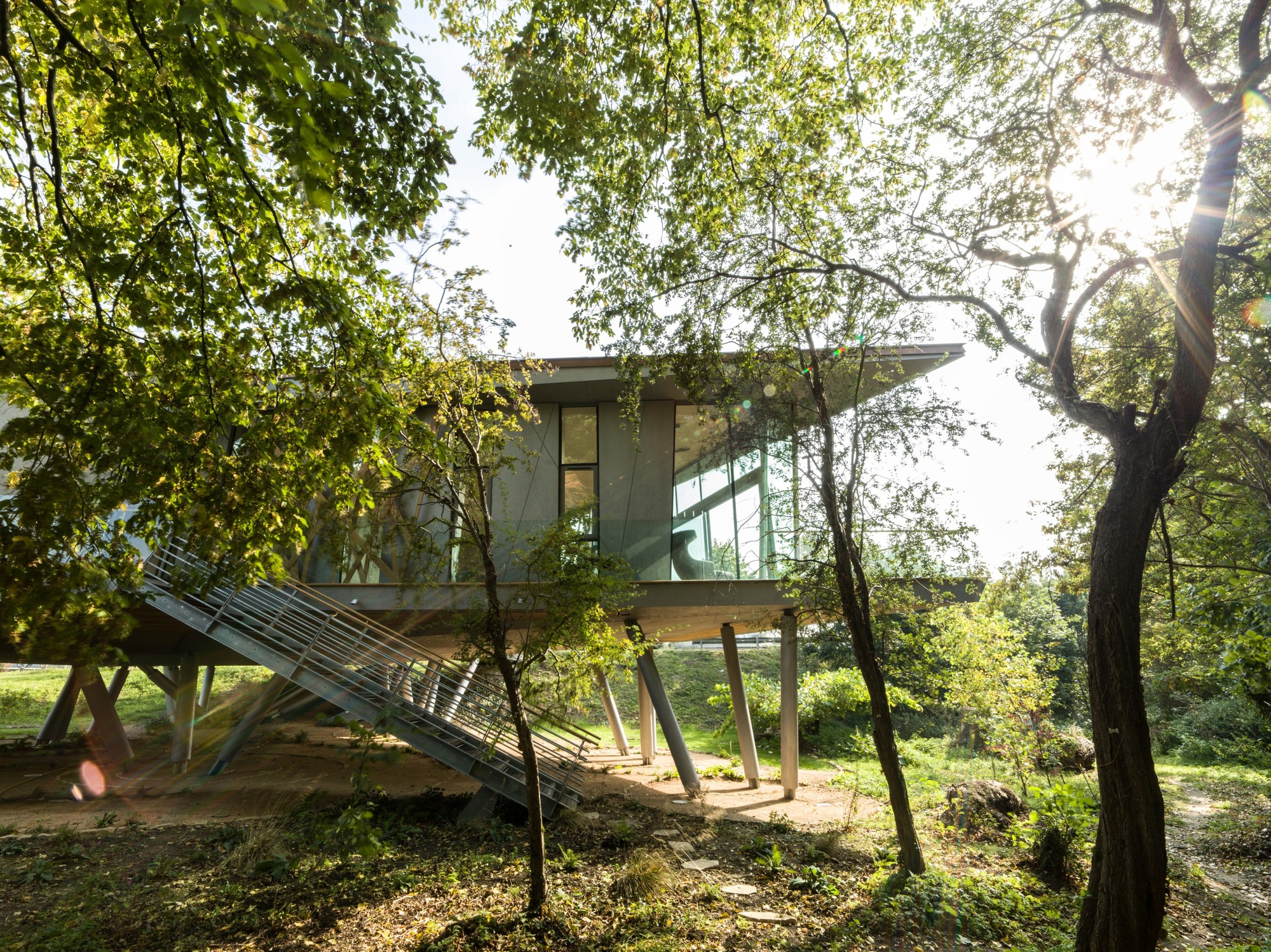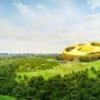When designing hospitals, there is a tendency to follow the road of rigid institutional buildings as a design concept mainly centering on functionality. Designing a truly exceptional building goes beyond the functionality of the spaces with one another. It’s a dovetail of function and form, so perfect, that the impression is unforgettable leaving a lasting sense of encounter with a truly beautiful and thoughtful design process. This is the case with recently completed Maggie Center in Churchill Hospital UK, designed by Wilkinson Eyre Architects.
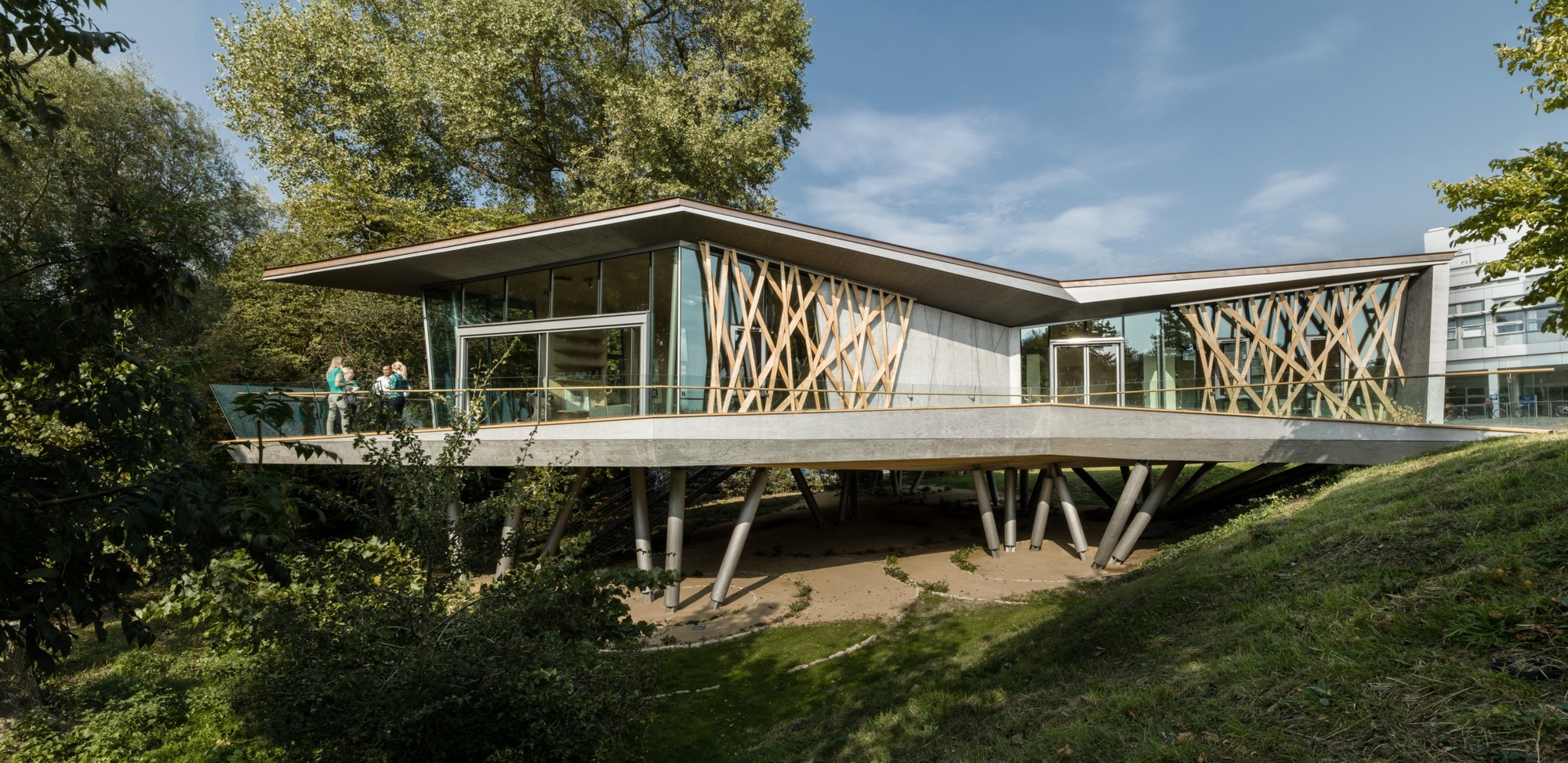 |
| Maggie’s Cancer Caring Centres are a network of drop-in centres in Great Britain, which aim to help anyone who has been affected by cancer. |
Taking into consideration the purpose of the building, the architects underwent a thoughtful process of planning and decisions to create a therapeutic and beautiful environment for its users and visitors. Located amongst a small group of trees, they took inspiration from a tree house, raising the building above the ground on Piloti.
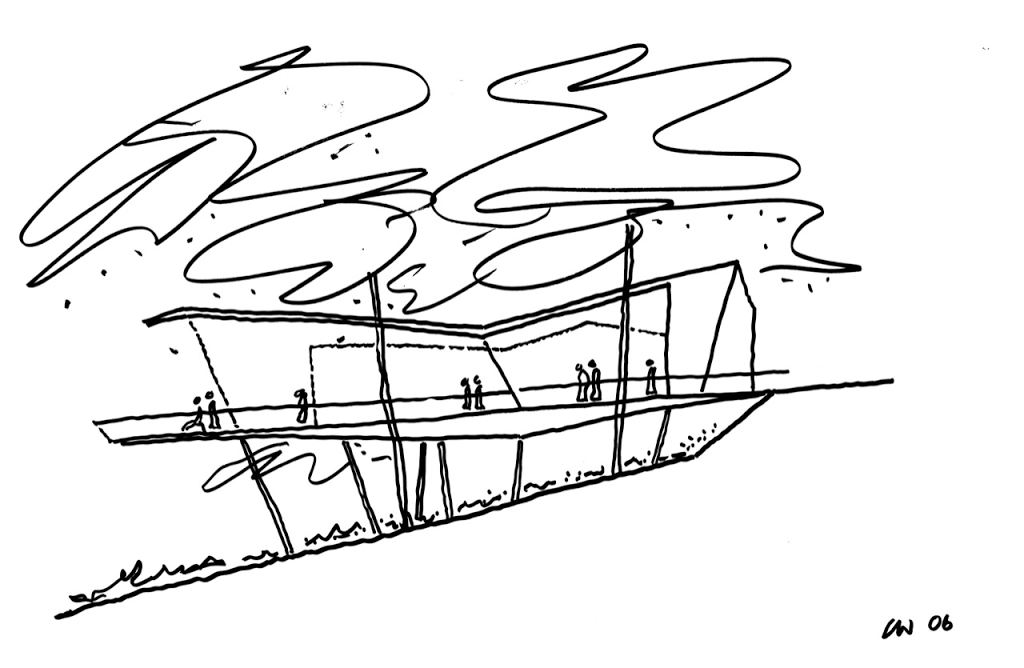 |
| A 3D sketch showing the idea of a tree house. |
 |
| The location of the Maggie’s center amongst the small group of trees. |
They walked away from the characteristic clinical look described in my first sentence by adopting angular geometry in its form creating internal spaces that are full of gentle movement and light. To ensure the building integrated easily with its woodland natural environment, timber was used for construction all the way up. According to the architect, “To minimise disruption to the flora and fauna, prefabricated crossply laminated timber panels were erected on glulam timber columns fixed to concealed screw piles below the ground. Informal clusters of tilted columns support the structure and evoke a thicket of tree trunks in the woods. The surface materials are largely timber and glass which are friendly and familiar and while modern, they will weather naturally and sit comfortably within the landscape“.
The architect described the floor plan as being “composed of three wings emanating from a central space which is a direct interpretation of the Maggie’s brief, allowing separate areas for information, emotional support and relaxation. All are linked to the central welcoming heart of the building which has a kitchen, dining table and stove. The spaces are of a domestic scale, friendly and inviting but also offering quiet places to retreat and reflect. Clerestory glazing connects partition walls to the ceiling, giving the feeling of an oversailing roof and bringing light through the building. Slot openings in the roof allow shafts of sunlight into the spaces and openings in the floor provide views through to the landscape below. Together, these elements combine to create a strong relationship between the internal spaces and the natural surroundings, offering views and light from every aspect. Considered details have further enhanced the Centre’s interior spaces: the kitchen table (designed by Wilkinson Eyre) and the colourful rug in the relaxation area (designed by Diana Edmunds) are bespoke designs, while delicate surface lines etched into the timber walls gently reinforce the building’s geometry“.
The building blends seamlessly with its environment. According to the architects, “The design interacts with and embraces nature to provide comfort and reassurance for visitors in their time of need” – a view we totally agree with.
[via Arch daily]



